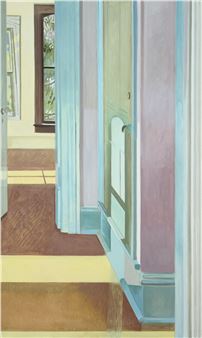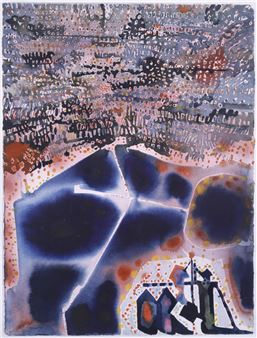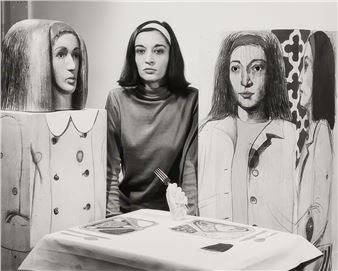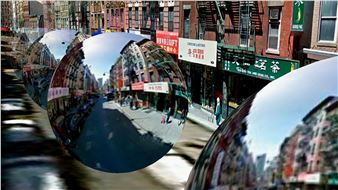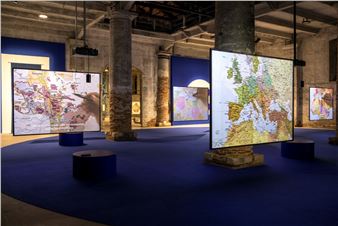Marsden Hartley: The earth is all I know of wonder
This autumn Louisiana Museum of Modern Art presents the biggest exhibition so far in Europe of the American painter Marsden Hartley, an important figure in American art history. It is the first time in 60 years that a retrospective exhibition of the artist can be seen on European soil. The works in the exhibition have been borrowed from the greatest American museums and private collections. The exhibition is thus a large-scale, ambitious venture for Louisiana.
Marsden Hartley (1877-1943) belongs among the first major modernist artists in 20th-century America; he was part of an artistic elite through which he moved both in Europe and in his home country. All the same, he is an undiscovered spot on the art-historical world map viewed from a present-day European perspective. Perhaps because of the multifaceted nature of his oeuvre, which has made it difficult to place him in the history of art, but probably also because there has been no retrospective presentation of Hartley’s works in Europe since the beginning of the 1960s.
During his adult life, Hartley never lived for more than ten months in the same place. Instead, he travelled in the USA and between the USA and Europe. He was a restless human being and a restless artist. The restlessness was undoubtedly a way of protecting himself from a loneliness he could not escape. Hartley was homosexual, which made it difficult for him to form long-lasting intimate relationships with other people.
Hartley’s works never remained unchanged by the people he met, the authors he read and the art he saw. He often changed track and gave the highest priority to artistic experimentation. In the 1920s, he even criticized his great idols Henri Matisse and Pablo Picasso for having become too comfortable and repetitive in their painting. Hartley himself never settled down either in art or in life. His unceasing transatlantic voyages make him an important element in the understanding of the relationship between the art scenes in Europe and in the USA, between which his oeuvre forms a bridge.
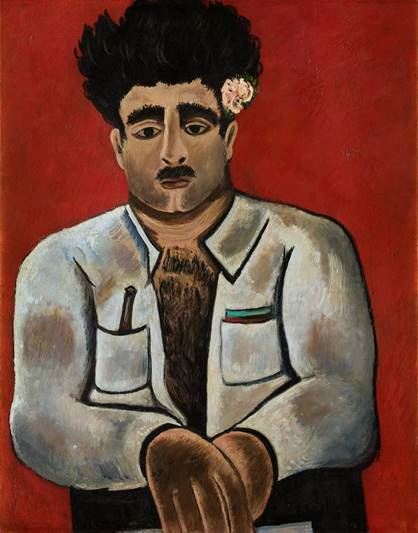
Recommended for you
This autumn Louisiana Museum of Modern Art presents the biggest exhibition so far in Europe of the American painter Marsden Hartley, an important figure in American art history. It is the first time in 60 years that a retrospective exhibition of the artist can be seen on European soil. The works in the exhibition have been borrowed from the greatest American museums and private collections. The exhibition is thus a large-scale, ambitious venture for Louisiana.
Marsden Hartley (1877-1943) belongs among the first major modernist artists in 20th-century America; he was part of an artistic elite through which he moved both in Europe and in his home country. All the same, he is an undiscovered spot on the art-historical world map viewed from a present-day European perspective. Perhaps because of the multifaceted nature of his oeuvre, which has made it difficult to place him in the history of art, but probably also because there has been no retrospective presentation of Hartley’s works in Europe since the beginning of the 1960s.
During his adult life, Hartley never lived for more than ten months in the same place. Instead, he travelled in the USA and between the USA and Europe. He was a restless human being and a restless artist. The restlessness was undoubtedly a way of protecting himself from a loneliness he could not escape. Hartley was homosexual, which made it difficult for him to form long-lasting intimate relationships with other people.
Hartley’s works never remained unchanged by the people he met, the authors he read and the art he saw. He often changed track and gave the highest priority to artistic experimentation. In the 1920s, he even criticized his great idols Henri Matisse and Pablo Picasso for having become too comfortable and repetitive in their painting. Hartley himself never settled down either in art or in life. His unceasing transatlantic voyages make him an important element in the understanding of the relationship between the art scenes in Europe and in the USA, between which his oeuvre forms a bridge.
Artists on show
Contact details

Related articles
If you were aggrieved this summer by MoMA’s temporary closure, relief is on the way. MoMA reopens after a $450 million renovation that brings expanded galleries, dedicated performance space, and a new commitment to diversifying its offerings.

 ARTISTS
ARTISTS








